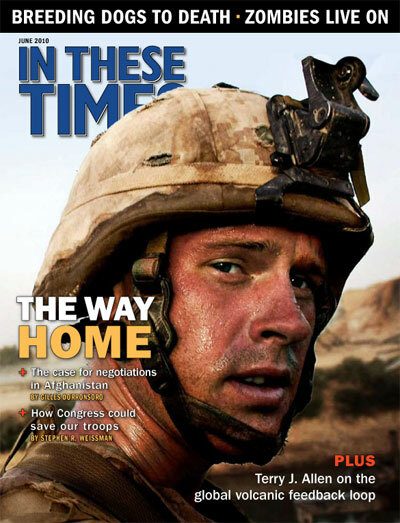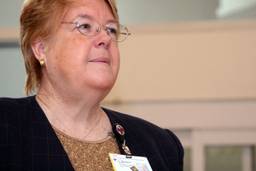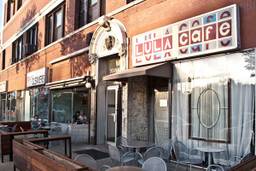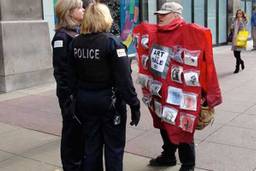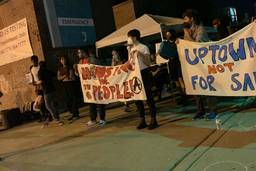Choose Your Own Budget
Chicagoans cut out the elected middle man to improve their neighborhood with $1.3 million in taxes.
Robin Peterson

CHICAGO — If you had $1.3 million to improve your neighborhood, how would you spend it?
Chicago’s aldermen face a similar question each year when deciding how to spend their “menu money,” the funding allocated by the city to each of its wards for capital infrastructure projects. For the past several years, Ald. Joe Moore, of the 49th Ward, has used the money for things like lighting and street resurfacing.
This year, Moore chose to allocate his 2010 menu money through a process called “participatory budgeting,” which allows citizens to vote directly on how to spend public money. Beginning more than a year ago and culminating in an April 10 election, the people of Chicago’s 49th Ward – which encompasses the North Side neighborhood of Rogers Park – became the first in the nation to implement such a process. More than 1,600 residents cast ballots for their favorite proposals and, in a binding decision, chose projects to fund. Anyone age 16 or older could vote in the election, including non-citizens.
Fourteen of the 36 proposals will receive funding. The list includes the usual pothole repairs, along with more ambitious projects such as bike lanes, community gardens, underpass murals and a dog park. “People clearly want to beautify the neighborhood,” says Sister Sue Kilduski, a member of the Benedictine Sisters of Chicago.
Kilduski was one of the approximately 20 members of the steering committee that developed the ward’s participatory budgeting process. In April 2009, Moore invited all the community organizations and institutions in the 49th Ward to send representatives to sit on this committee. Forty people attended the first workshop, in which they set a timeline and structure for the process with help from the nonprofit Participatory Budgeting Project.
In November 2009, residents held a series of meetings across the ward to brainstorm funding ideas. By the end of the nine meetings, more than 60 people had volunteered to serve as community representatives who would develop the initial proposals into viable ballot measures. Forming six committees on topics such as transportation, public safety and the arts, the community reps spent the next four months thoroughly researching their projects. This meant familiarizing themselves with city policy and with their neighborhood. The public safety committee, for instance, learned the city’s safety protocols on a visit to the downtown Office of Emergency Management and Communications. The streets committee traveled every street and sidewalk in the ward to determine which ones most needed repair.
“The whole process builds really strong connections among neighbors,” says Abel Leon, a parks and environment committee member who spearheaded the dog park project. Before he proposed the idea, Rogers Park dog lovers had already formed a Facebook group to advocate for a neighborhood dog park; most of the group’s members turned out to vote for that project. Each resident who attended the April 10 election was allowed to vote for a total of eight projects. Community reps were on hand with statistics and diagrams to explain their proposals’ merits.
Modern-day participatory budgeting originated in 1989 as a way to address inequality among residents of Porto Alegre, Brazil, many of whom lived in slums without access to city amenities. Since then, it has spread to more than 1,200 cities throughout the world, and is now a mandatory practice of some local governments in the United Kingdom and the Dominican Republic, among other countries.
Residents of the 49th Ward are eager to share participatory budgeting with the rest of the city. “We should form a group to bring it out to other wards,” Paul Bluestone, a steering committee member, said at an April 27 meeting in which the committee reconvened to start improving the process for the coming year. Moore has suggested holding a colloquium at City Hall with aldermen who are interested in the process, and a couple of City Council candidates have already made participatory budgeting part of their platforms.
Rogers Park is one of Chicago’s most diverse neighborhoods, a fact that created challenges to getting everyone on board the new budgeting process. Latinos in particular were not well represented at committee meetings or at the polls, though they make up more than a quarter of the ward’s population. There are many theories as to the cause of the low turnout: Some community leaders cite fears about immigration status, while others have suggested that Latino community involvement is less focused on infrastructure and more on education. Regardless, committee members agree, more research and outreach is necessary before the next round of participatory budgeting.
Nonetheless, the April 10 turnout of 1,652 was unexpectedly high. The winning projects will be implemented this year, except the longer-term plans for underpass murals and artistic bike racks, which require another participatory budgeting process to select artists.
In the words of David Fagus, steering committee member and Democratic committeeman for the 49th Ward: “The best part is the community not only had a voice, but actually used it.”
